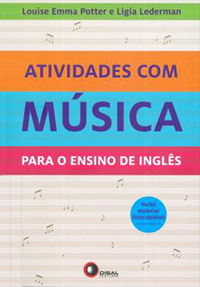By - Melissa Marion

As a teacher, maybe you have asked yourself if what you teach is relevant to your students, if your students are engaged or if they are really learning.
I have questioned myself many times. Being an English teacher for more than 20 years, even when working in small groups that wanted and needed to learn, I felt there was a gap between their needs and what I was offering.
Two years ago, my coordinators Louise Potter and Juliana Tavares, introduced me to something called PBL (Project Based Learning). I was amazed by how that idea answered all the questions I had been asking myself and offered real solutions to many of the problems I faced in the classroom.
We have been taught in a traditional way, where most of the content is out of context. I frequently asked myself, why Am I learning this, when or where am I going to apply it? As a teacher I realized that my students still struggled to see relevance in my classes and subjects. Even if I tried to apply knowledge with real world questions, they were often hypothetical, and it always felt like school work.
With PBL, the content is incorporated into a project built on a real-world problem (driving question) that students need to solve in a creative and authentic way (final product). In the process of solving the problem, students learn what is expected in the required standards integrated into the project, not working on it separately.
Being aware of all different skills that are required of my students and not seeing how to develop them while having to deal with books, assignments and tests, I fell in love with Project Based Learning for the significance it brought to my content, multiple learning outcomes, the relationship that flourished between me and my students and the numerous abilities we developed throughout the process, as collaborative working, problem-solving skills, written and verbal communication skills, initiative, critical thinking amongst others.
I would like to share with you a little bit about what I have learned and am still learning about PBL and my students, hoping it might be a source of new ideas and motivation for your journey as a teacher.
Here are 6 topics that really helped me while working with PBL in my classrooms.
STUDENT CENTERED: We have heard so much about the need to have our students as the center of our classrooms, but still our material, our grading systems, our plannings are not made to consider and challenge the student as an individual, with specific needs and motivation. We go into a classroom with no knowledge of who those people are, what they want and what their expectations are.
PBL is about what students want to know, what are their real questions about the content we are working in class, it is about relevance to their everyday lives and challenges. We are only able to gather this information if they are the ones talking and participating in class. There are many resources and activities that can be used to promote an atmosphere where our students are the center of our classrooms, and we become facilitators of the learning process.
Rebecca Alber (2015), published some guiding questions on edutopia.org that made me reflect about the learning environment I was creating in my classroom:
DRIVING QUESTION: It’s all about asking the right question. Most of our students were not encouraged to ask questions, they are not familiar to their classrooms being the place where they can raise their hands and ask about things they are interested in and that are connected to their lives right now, this is one of the reasons why creating a driving question can become very difficult.
It is essential for the question to be open ended, engaging, real world – aligned, and that requires learners to create a solution. When generating a question remember to be age appropriate, it can be prepared by the teacher or with the students in class.
There are various ways to create a driving question, some of the options to consider are if the question should be Philosophical or Debatable; Product-Oriented or Role-Oriented.
RESEARCH: The right question leads learners to dig for data, ask questions, find resources, and apply information. This process provides deeper, broader and more meaningful learning. They are in charge of finding answers to their driving question stimulating autonomy and responsibility.
Researching also opens opportunity for students to learn how to use different search engines, check for reliable sources, investigate different page formats, explore filters, identify unique search terms to locate target sources, interpret and analyze their findings.
PLAN: While we teachers have planned our projects way before, students will start to gather all information and plan their final product. Throughout the whole process learners that have been working together, really learn how to collaborate with each other, discussing their findings, testing their theories, and creating a final product that will be presented to the whole class.
Working with PBL has broaden my understanding of planning not only a project but the time a spend in the classroom, my who, what, where, when, how, and why need to be clear to me and to my students. Setting goals, time, clear expectations is essential for the project as well as assessing it afterwards.
PRESENTATION: PBL’s main objective is to bring learners and the community around them solutions to real life problems. Presenting their questions, research and findings brings a new meaning to the student’s role in the learning process. It also gives opportunity for students to share with others what they’ve learned in English or their target language. PBL presentations encourage participation enhanced by social and emotional value. Some examples are exhibitions, portfolios, performances, reports, books, videos, talks and others.
ASSESSMENT: When planning, it is important to remember that all of the steps need to be assessed by the teacher and students. Knowing exactly what is expected for each part of the project and everyone’s roles in this process is vital for success. Providing multi-faceted resources like to do lists, rubrics, research engines, self-assessments, peer and teachers assessments are extremely helpful. It also offers various opportunities for students to receive feedback, revise their work and reflect on what was learned and areas that need to be improved.
There are so many useful sites and information about PBL out there that it would be impossible to list them all, but here are the ones I found most helpful. Hope you enjoy it.
https://www.bie.org/about/what_pbl
https://www.youtube.com/watch?v=LMCZvGesRz8
https://www.edutopia.org/video/5-keys-rigorous-project-based-learning
https://www.edutopia.org/blog/practical-pbl-design-amber-graeber
https://www.cultofpedagogy.com/project-based-learning/
Reference:
Alber, R. (2015) How Student Centered Is Your Classroom? Retrieved from
https://www.edutopia.org/blog/how-student-centered-your-classroom-rebecca-alber
Melissa Marion
melissamarionp@gmail.com
LIVRO RECOMENDADO
